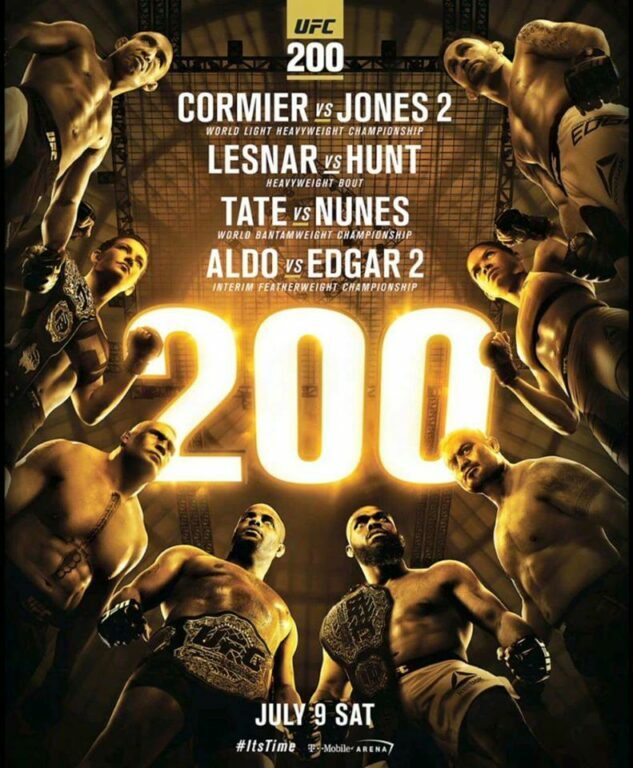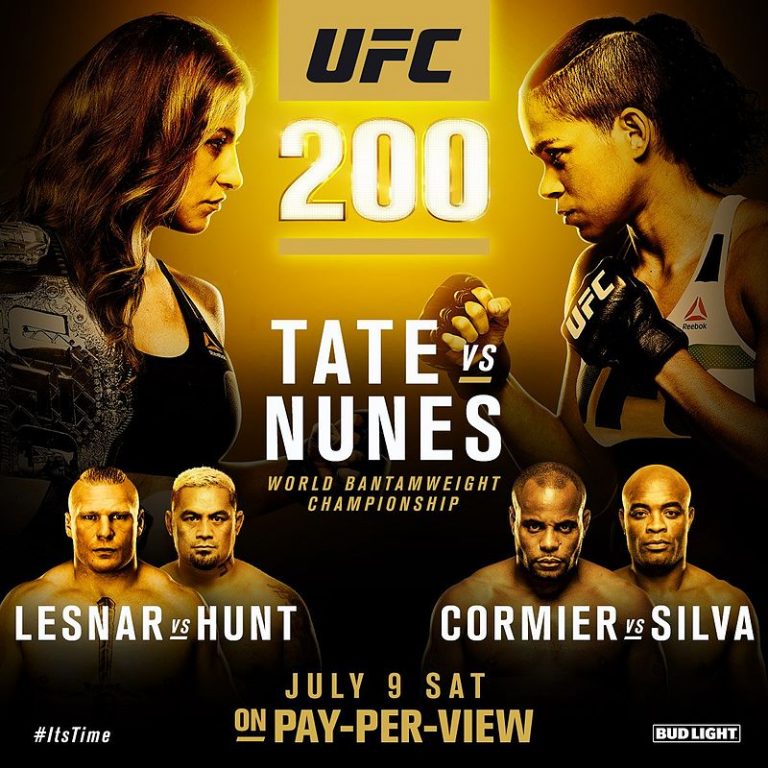The UFC 200 event, held on July 9, 2016, stands as one of the most significant milestones in the world of mixed martial arts (MMA). Featuring a lineup of elite fighters, the card was a showcase of talent and intensity that captivated fans around the globe. Initially, the fight card was stacked with exciting matchups, promising a night full of unforgettable moments and fierce competition. However, as with any major sporting event, changes were made leading up to the fight night, which left fans wondering about the implications on the original lineup.
The UFC 200 original card was designed to create a buzz and anticipation among MMA enthusiasts. It was set to feature a range of fighters from multiple weight classes, with championship titles and rankings on the line. The event gathered significant media attention, not just for the fights, but also for the implications it had on the sport's future. As fans eagerly awaited the event, speculations ran rampant about potential outcomes and the fighters' performances.
In this article, we will delve into the details of the UFC 200 original card, exploring the planned matchups, the alterations that occurred, and the impact of this event on the UFC landscape. Whether you're a die-hard fan or a casual observer, understanding the significance of UFC 200 is essential to appreciating the evolution of the sport.
What Were the Key Matchups on the UFC 200 Original Card?
The original UFC 200 card promised several high-stakes matchups that could alter the careers of the fighters involved. Here are some of the highlighted fights that were initially scheduled:
- Daniel Cormier vs. Anderson Silva (Light Heavyweight Championship)
- Mark Hunt vs. Brock Lesnar (Heavyweight Bout)
- T.J. Dillashaw vs. Renan Barao (Bantamweight Championship)
- Cain Velasquez vs. Travis Browne (Heavyweight Bout)
- Jim Miller vs. Thiago Alves (Lightweight Bout)
- Julianna Peña vs. Cat Zingano (Women’s Bantamweight Bout)
How Did the UFC 200 Original Card Change Before Fight Night?
As the event date approached, several changes occurred that altered the original card. One of the most notable changes was the removal of Jon Jones from the event due to a legal issue, which led to Anderson Silva stepping in to fight Daniel Cormier. Additionally, a few fighters were forced to withdraw due to injuries, which resulted in reshuffling of matchups and the introduction of new fighters into the mix.
What Was the Impact of Jon Jones’ Withdrawal from the UFC 200 Original Card?
Jon Jones, a prominent figure in the UFC, was slated to headline the event against Daniel Cormier. His withdrawal not only changed the main event but also affected the overall perception of UFC 200. Fans were disappointed, and the media buzz shifted focus from the card's excitement to the implications of Jones' absence. This shift raised questions about the future of the light heavyweight division and the impact on the fighters involved.
What Were the Highlights of UFC 200 After the Changes?
Despite the changes, UFC 200 delivered memorable moments that will be talked about for years. The event showcased some intense battles, including:
- Brock Lesnar's stunning return to the octagon against Mark Hunt, where he won by unanimous decision.
- Daniel Cormier successfully defending his title against Anderson Silva, despite the latter stepping in on short notice.
- T.J. Dillashaw reclaiming his title in a thrilling fight against Renan Barao.
How Did UFC 200 Influence Future Events?
UFC 200 not only entertained fans but also set a precedent for how the organization handled fighter withdrawals and changes to fight cards. The event underscored the importance of having backup fighters ready to step in when necessary. Following UFC 200, the UFC implemented more stringent policies regarding fighter readiness and event planning to avoid similar situations in the future.
What Were the Fan Reactions to the UFC 200 Original Card Changes?
Fan reactions to the changes in the UFC 200 original card were mixed. While many were disappointed about the absence of Jon Jones, the excitement surrounding Brock Lesnar's return and the competitive nature of the fights helped to alleviate some of that disappointment. Social media was abuzz with commentary, analysis, and predictions leading up to the event, showcasing the passionate fanbase that surrounds the UFC.
What is the Legacy of the UFC 200 Original Card?
The UFC 200 original card has left a lasting legacy within the mixed martial arts community. It highlighted the unpredictability of fight cards and the resilience of athletes willing to step up in the face of adversity. The event's significance is still felt today as fighters and promoters reflect on the lessons learned and the excitement generated by such a monumental event.
Can We Expect Similar Events in the Future?
Looking ahead, fans can expect the UFC to continue delivering thrilling events with high-stakes matchups. The lessons gleaned from UFC 200 will likely influence how future cards are structured and managed, ensuring that fans receive the excitement they crave while maintaining the integrity of the sport.
Conclusion: The Enduring Impact of UFC 200
In conclusion, the UFC 200 original card may not have unfolded as initially planned, but it ultimately provided fans with an unforgettable night of fights. The event showcased the incredible talent in the UFC, the unpredictability of the sport, and the passion of its devoted fanbase. As the UFC continues to grow and evolve, the legacy of UFC 200 remains a pivotal chapter in the history of mixed martial arts.
Understanding The Costs: UFC 272 Price Breakdown
Unleashing The Warrior Within: Steps To Become A UFC Fighter
Unveiling The Legacy Of Riddick Bowe: A Boxing Icon


